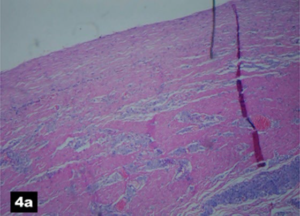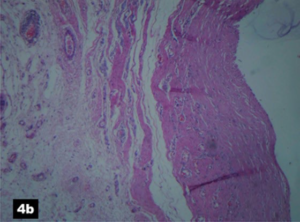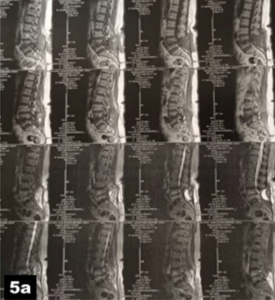1. Swanson HS, Fincher EF. Extradural arachnoidal cysts of traumatic origin. J Neurosurg. 1947; 4: 530-538. doi: 10.3171/ jns.1947.4.6.0530
2. Winkler H, Powers JA. Meningocele following hemilaminectomy; Report of 2 cases. N C Med J. 1950; 11: 292-294.
3. Miller PR, Elder FW. Meningeal pseudocysts (meningocele spurius) following laminectomy. Report of ten cases. J Bone Joint Surg. 1968; 50A: 268-276. doi: 10.2106/00004623-196850020-00005
4. Stone JG, Bergmann LL, Takamori R, Donovan DJ. Giant pseudomeningocele causing urinary obstruction in a patient with Marfan syndrome. J Neurosurg Spine. 2015; 23: 77-80. doi: 10.3171/2014.11. SPINE131086
5. Dobran M, Iacoangeli M, Ruscelli P, Costanza MD, Nasi D, Scerrati1 M. A giant lumbar pseudomeningocele in a patient with neurofibromatosis Type 1: A case report. Case Rep Med. 2017; 2017: 4681526. doi: 10.1155/2017/4681526
6. Rahimizadeh A, Ehtesham S, Yazdi TT, Rahimizadeh S. Remote paraparesis due to a traumatic extradural arachnoid cyst developing 2 Years after brachial plexus root avulsion injury: Case report and review of the literature. J Brachial Plex Peripher Nerve Inj. 2015; 10: e43-e49. doi: 10.1055/s-0035-1558426
7. Hader WJ, Fairholm D. Giant intraspinal pseudomeningoceles cause delayed neurological dysfunction after brachial plexus injury: Report of three cases. Neurosurgery. 2000; 46(5): 1245-1249. doi: 10.1097/00006123-200005000-00044
8. Rahimizadeh A, Javadi SA. Symptomatic intraspinal lumbosacral pseudomeningocele, A late consequence of root avulsion injury secondary to a gunshot wound. North American Spine society Journal (NASS J). 2020; 3: 100025. doi: 10.1016/j.xnsj.2020.100025
9. Barazi SA, D’Urso PI, Thomas NW. Pseudomeningocele after anterior cervical discectomy and fusion: Case report. Cent Eur Neurosurg. 2012; 73: P050. doi: 10.1055/s-0032-1316252
10. Rahimizadeh A, Soufiani H, Rahimizadeh S. Remote cervical pseudomeningocele following anterior cervical corpectomy and fusion: Report of a case and review of the literature. Int J Spine. Surg. 2016; 10: 36. doi: 10.14444/3036
11. Macky M, Lo S, Bydon M, Kaloostian P, Bydon A. Post-surgical thoracic pseudomeningocele causing spinal cord compression. J Clin Neurosci. 2014; 21: 367-372. doi: 10.1016/j.jocn.2013.05.004
12. Filho AAP, de David G, Pereira Filho GA, Brasil AVB. Symptomatic thoracic spinal cord compression caused postsurgical pseudomeningocele. Arq Neuropsiquiatr. 2007; 65: 279-282. doi: 10.1590/s0004-282×2007000200017
13. Pagni CA, Cassinari V, Bernasconi V. Meningocele spurious following hemilaminectomy in a case of lumbar discal hernia. J Neurosurg. 1961; 18: 709-710. doi: 10.3171/jns.1961.18.5.0709
14. Rahimizadeh A, Kaghazchi M, Rahimizadeh A. Post-laminectomy lumbar pseudomeningocele: Report of three cases and review of the literature. World Spinal Column J( WScJ). 2014; 4: 103-108.
15. Eneke O, Dannaway J, Tait M, New CH. Giant lumbar pseudomeningocele after revision lumbar laminectomy: A case report and review of the literature. Spinal Cord Ser Cases. 2018; 4: 82. doi: 10.1038/s41394-018-0118-z
16. Rahimizadeh A, Mohsenikabir N, Asgari N. Iatrogenic lumbar giant pseudomeningocele: A report of two cases. Surg Neurol Int. 2019; 10: 213. doi: 10.25259/SNI_478_2019
17. Rinaldi I, Peach WF. Postoperative lumbar meningocele: Report of two cases. J Neurosurg. 1969; 30: 504-507. doi: 10.3171/jns.1969.30.4.0504
18. Rinaldi I, Hodges TO. Iatrogenic lumbar meningocele: Report of three cases. J Neurol Neurosurg Psychiatry. 1970; 33: 484-492. doi: 10.1136/jnnp.33.4.484
19. Schumacher H-W, Wassman H, Podlinski C. Pseudomeningocele of the lumbar spine. Surg Neurol. 1988; 29: 77-78. doi: 10.1016/0090-3019(88)90127-9
20. Lee KS, Hardy IM II. Postlaminectomy lumbar pseudomeningocele: Report of four cases. Neurosurgery. 1992; 30: 111-114. doi: 10.1227/00006123-199201000-00020
21. Pavlou G, Bucur SD, van Hille PT. Entrapped spinal nerve roots in a pseudomeningocoele as a complication of previous spinal surgery. Acta Neurochir (Wien). 2006; 148: 215-220. doi: 10.1007/ s00701-005-0696-y
22. Hamilton RG, Brown SW, Goetz LL, Miner M. Lumbar pseudomeningocele causing hydronephrosis. J Spinal Cord Med. 2009; 32(1): 95-98. doi: 10.1080/10790268.2009.11760758
23. Weng YJ, Cheng CC, Li YY, Huang TJ, Hsu RWW. Manage ment of giant pseudomeningoceles after spinal surgery. BMC Musculoskelet Disord. 2010; 11: 53. doi: 10.1186/1471-2474-11-53
24. Liu C, Cai HX, S Fan SW, Liu YJ. Postoperative pseudomeningocele in a 40-year-old man. Ir J Med Sci. 2011; 180: 925-927. doi: 10.1007/s11845-010-0598-8
25. Alvarez CM, Urakov TM, Vanni S. Repair of giant postlaminectomy pseudomeningocele with fast-resorbing polymer mesh: technical report of 2 case. J Neurosurg Spine. 2018; 28: 341-344. doi: 10.3171/2017.6.SPINE161292
26. Hamdan A, Saxena A, Rao G Ivanov M. Compression of a giant pseudomeningocele causing transient anoxic seizures: A case report. Acta Neurochirug. 2018; 160: 479-485. doi: 10.1007/s00701- 017-3446-z
27. Hawk MW, Kim KD. Review of spinal pseudomeningoceles and cerebrospinal fluid fistulas. Neurosurg Focus. 2000; 9(1): e5. doi: 10.3171/foc.2000.9.1.5
28. Cobb C, Ehni G. Herniation of the spinal cord into an iatrogenic meningocele. Case report. J Neurosurg. 1973; 39(4): 533-536. doi: 10.3171/jns.1973.39.4.0533
29. Rahimizadeh A, Kaghazchi M, Shariati M, Abdolkhani E. Spinal extradural arachnoid cysts. Coluna/Columna. 2013; 12(2): 112- 118. doi: 10.1590/S1808-18512013000200004
30. Aldrete JA, Ghaly R. Postlaminectomy pseudomeningocele. An unsuspected cause of low back pain. Reg Anesth. 1995; 20: 75-79. doi: 10.1136/rapm-00115550-199520010-00013
31. Hadani M, Findler G, Knoler N, Tadmor R, Sahar A, Shacked I. Entrapped lumbar nerve root in pseudomeningocele after laminectomy: Report of three cases. Neurosurgey. 1986; 19: 405-497. doi: 10.1227/00006123-198609000-00011
32. O’Connor D, Maskery N, Griffiths WE. Pseudomeningocele nerve root entrapment after lumbar discectomy. Spine (Phila Pa 1976). 1998; 23: 1501-1502. doi: 10.1097/00007632-199807010- 00014
33. Kamali R, Beni ZN, Beni AN, Forouzandeh M. Postlaminectomy lumbar pseudomeningocele with nerve root entrapment: A case report with review of literature. Eur J Orthop Surg Traumatol. 2012; 22 (Suppl 1): S57-S61. doi: 10.1007/s00590-011-0934-3
34. Toppich HG, Feldmann H, Sandvoss G, Meyer F. Intervertebral space nerve root entrapment after lumbar disc surgery. Spine (Phila Pa 1976). 1994; 19: 249-250. doi: 10.1097/00007632- 199401001-00021
35. Asha MJ, George KJ, Choksey M. Pseudomeningocele presenting with cauda equina syndrome: Is ball-valve theory the answer. Br J Neurosurgery. 2011; 25: 766-768. doi: 10.3109/02688697.2011.578768
36. Marlin AE, Epstein F, Rovit R. Positional headache and syncope associated with a pseudomeningocele. Arch Neurol. 1980; 37: 736-737. doi: 10.1001/archneur.1980.00500600084022
37. De luca GC, Garza I, Lanzino G, Watson JC. An unexpected cause of orthostatic headache: Delayed postlaminectomy pseudomeningocele. Neurology. 2010; 74: 1553. doi: 10.1212/ WNL.0b013e3181dd4319
38. Kuhn J, Hofman B, Knitelious HO, Coenen HH, Bewermyer H. Bilateral subdural hematoma and lumbar pseudomeningocele due to chronic leakage of liquor cerebrospinalis after lumbar discectomy with application of Adcon-L gel. J Neurol Neurosurg Psychiat. 2005; 76(103): 1031-1033. doi: 10.1136/jnnp.2004.046276
39. Koo J, Adamson R, Wagner FC, Jr, Hrdy DB. A new cause of chronic meningitis, infected lumbar pseudomeningocele. Am J Med. 1989; 86(1): 103-104. doi: 10.1016/0002-9343(89)90238-6
40. Nairus JG, Richman RJ, Douglas RA. Retroperitoneal pseudo-meningocele complicated by meningitis following a lumbar burst fracture. A case report. Spine (Phila Pa 1976). 1995; 21: 1090- 1093. doi: 10.1097/00007632-199605010-00020
41. Kolawole TM, Patel PJ, Naim-Ur-Rahaman. Post-surgical anterior pseudomeningocele presenting as an abdominal mass. Comput Radiol. 1987; 11: 237-240. doi: 10.1016/0730-4862(87)90004-7
42. Lau KK, Stebnyckyj M, McKenzie A. Post-laminectomy pseudomeningocele: An unusual cause of bone erosion. Australas Radiol. 1992; 36: 262-264. doi: 10.1111/j.1440-1673.1992.tb03166.x
43. Tsuji H, Handa N, Handa O, Tajima G, Mori T. Postlaminectomy ossified extradural pseudocyst. Case report. J Neurosurg. 1990; 73: 785-787. doi: 10.3171/jns.1990.73.5.0785
44. Al-Erdus SA, Mukari SAM, Ganesan D, Rimali N. Ossified lumbar pseudomeningocele: Imaging findings. Spine J. 2011; 11: 796-797. doi: 10.1016/j.spinee.2011.05.013
45. Akhaddar A, Boulahourd O, Boucetta M. Nerve root herniation into a calcified pseudomeningocele after lumbar laminectomy. Spine J. 2012; 12: 273. doi: 10.1016/j.spinee.2012.02.008
46. Lau KK, Stebnyckyj M, McKenzie A. Post-laminectomy pseudomeningocele: An unusual cause of bone erosion. Australas Radiol. 1992; 36: 262-264. doi: 10.1111/j.1440-1673.1992.tb03166.x
47. Teplick JG, Peyster RG, Teplick SK, Goodman LR, Haskin ME. CT identification of postlaminectomy pseudomeningocele. AJR Am J Roentgenol. 1983; 140: 1203-1206. doi: 10.2214/ajr.140.6.1203
48. Paolini S, Ciapetta P, Piattella MC. Intraspinous postlaminectomy pseudomeningocele. Eur Spine J. 2003; 12: 325-327. doi: 10.1007/s00586-002-0482-y
49. Murayama S, Numaguchi Y, Whitecloud TS, Brent CR. Mag netic resonance imaging of postsurgical pseudomeningocele. Comput Med Imaging Graph. 1989; 13: 335-339. doi: 10.1016/0895- 6111(89)90211-5
50. Buy X, Alberti N, Pointillart V, Loiseau H, Palussière J. Intravertebral pseudomeningocele: An unusual complication after disc surgery. Spine J. 2014; 14(11): e1-e4. doi: 10.1016/j.spinee.2014.08.011
51. Solomon P, Sekharappa V, Krishnan V, David KS. Spontaneous resolution of postoperative lumbar pseudomeningoceles: A report of four cases. Indian J Orthop. 2013; 47: 417-421. doi: 10.4103/0019- 5413.114937
52. Gupta R, Narayan S. Post-operative pseudomeningocele after spine surgery: Rare cause of failed back syndrome. Iran J Neurosurg. 2016; 2(1): 15-18. doi: 10.18869/acadpub.irjns.2.1.15
53. Nicolletti GF, Umana GE, Florio FG A, Scalia G. Repair of spinal pseudomeningocele in a delayed postsurgical cerebrospinal fluid leak using titanium U clips: Technical note. Interdisciplinary Neurosurgery. 2020; 21: 1000742. doi: 10.1016/j.inat.2020.100742
54. Misra SN, Morgan HW, Sedler R. Lumbar myofacial flap for pseudomeningocele repair. Neurosurg Focus. 2003; 15(3): E13. doi: 10.3171/foc.2003.15.3.13













